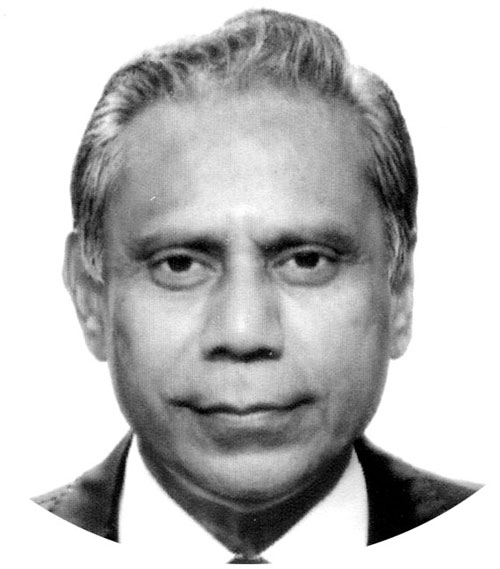WHO renames Indian COVID-19; but challenges remain
THE World Health Organization (WHO) has decided to rename the known variants of the SARS-Cov-2 virus using Greek letters, in a move to avoid biases against people from specific parts of the world, it was announced.
The decision came after criticism of the way they have been named up until now.
The variants have either been titled by their scientific name, making them hard to differentiate, or by their place of origin which many scholars argue could stigmatize countries where the strains were first discovered.
In the recent past, there have been attacks against Chinese people, and the increased expansion of the so-called Indian variety could feed hatred towards citizens from that nation, the WHO feared.
The new names are as follows: UK–—Alpha; South Africa—Beta; Brazil (Manaus—Gamma; India—Delta & Kappa; US—Epsilon; Philippines—Theta.
The fact remains that by changing the names of the strains, will not reduce the lethality of the virus or its strain.
One is reminded of the quote from William Shakespeare’s play Romeo and Juliet: “What’s in a name? That which we call a rose, by any other name would smell as sweet.”
India is reeling under the impact of the Coronavirus, which has taken a huge toll of lives. It is alarming that India has crossed two grim landmarks.
The previous week, it became the second country after the United States to record more than 25 million coronavirus cases.
Earlier last week, it became the third country after the US and Brazil to report more than 300,000 virus-related deaths.
Amidst this pandemonium, death and mayhem, one segment of society, which has suffered immensely, is the migrant workers, who travel back and forth and whose livelihoods have been hit by lockdowns.
Although vaccination for this group started on May 1 the problem they are facing is that they have no idea where and how to get vaccinated.
Secondly, so far the group of people included in this list is adults above 45 years of age whereas, the migration-prone age group, especially inter-state migrant workers, are mostly less than 30 years.
Experts opine that many of India’s 140 million migrant workers run the risk of being left out of the ongoing COVID-19 vaccination drive either due to a lack of awareness, want of a targeted strategy, or a severe shortage of doses.
They believe that this group should be prioritized for vaccination because they are the ones moving and so their risk factor is much more compared to others. The migrant workers were badly hit last year too when the pandemic hit India.
On March 24 last year, Indian Prime Minister Narendra Modi announced a nationwide lockdown on four hours’ notice.
Days later, more than 11.4 million migrant workers, rendered jobless overnight, tried to go home, many walking on foot for hundreds of kilometres. Numerous succumbed to hunger and fatigue.
Last month, when a deadly second wave of the virus intensified, many workers were again constrained to leave big cities. They boarded trains and buses as states announced lockdowns.
Thousands of workers went home, thus the need to vaccinate them in the cities they work in to prevent COVID from travelling back to their hometowns with them.
However, the vaccination drive has faced impediments with many states reporting a severe shortage.
India, the world’s largest vaccine maker, has fully vaccinated just over 41.6 million people with both doses, which comprises only 3.8 per cent of its nearly 1.35 billion population.
A recent study on the subject, titled ‘The impact of domestic travel bans on COVID-19 is nonlinear in their duration’ by Fiona Burlig, Anant Sudarshan, and Garrison Schlauch of Becker Friedman Institute, disclosed eye opening results.
The researchers state that domestic mobility restrictions to control the spread of COVID-19 are widespread in developing countries, and have trapped millions of migrant workers in hotspot cities.
They deduced that bans can increase cumulative infections relative to counterfactual sans restrictions.
Scientific models of testing indicate that bans’ impacts are nonlinear in duration. They empirically tested this hypothesis using a natural experiment in India as well as data from China, Indonesia, the Philippines, South Africa and Kenya.
They concluded that although very short and long restrictions limit the spread of disease, moderately lengthy restrictions substantially increase infections.
This suggests significant caution before imposing mobility restrictions in developing countries.
Domestic travel bans imposed by the governments of developing countries to control virus spread can be counterproductive, especially in the medium term, as they confine migrant workers to an area where cases are rising, thus increasing their risk of getting infected.
India’s woes are multiplied by the advent of another challenge — a rare infection called mucormycosis — also known as “black fungus”.
This disease is a fungal infection caused by exposure to moulds called mucormycetes, which are commonly found in soil.
Once it takes hold, the infection spreads through the respiratory tract and starts to erode facial structures.
The infection affects the sinuses, brain, skin, lungs and kidneys. It’s known as “black fungus” because patients can develop blisters or ulcers that turn black.
It behaves like a termite, since it keeps on increasing in a local area and keeps destroying the organs and the tissues that are coming closer to it.
Under these bleak circumstances, Indians need the sympathy of the world in combating these serious challenges.
—The writer is retired PAF Group Captain and a TV talk show host.









